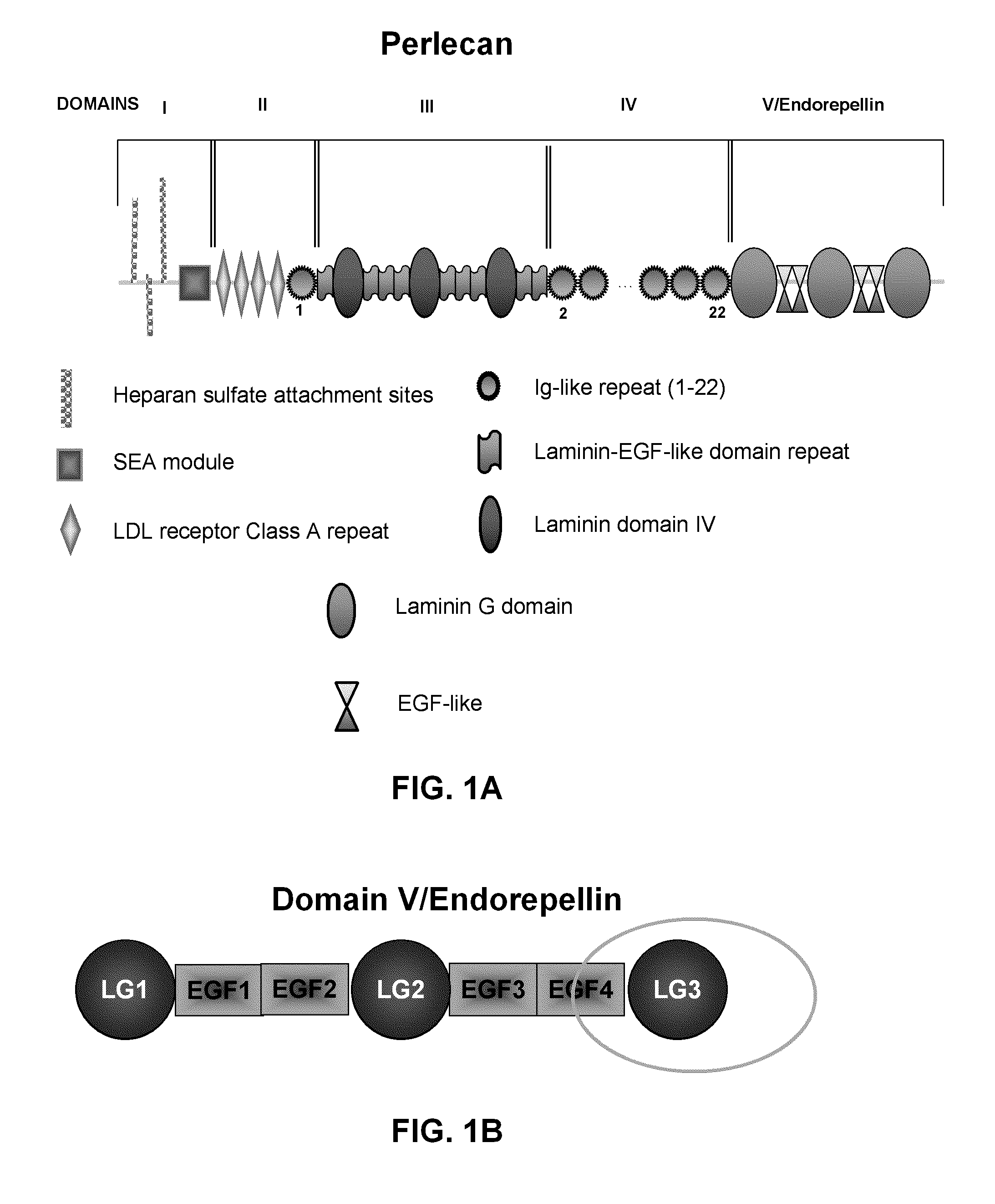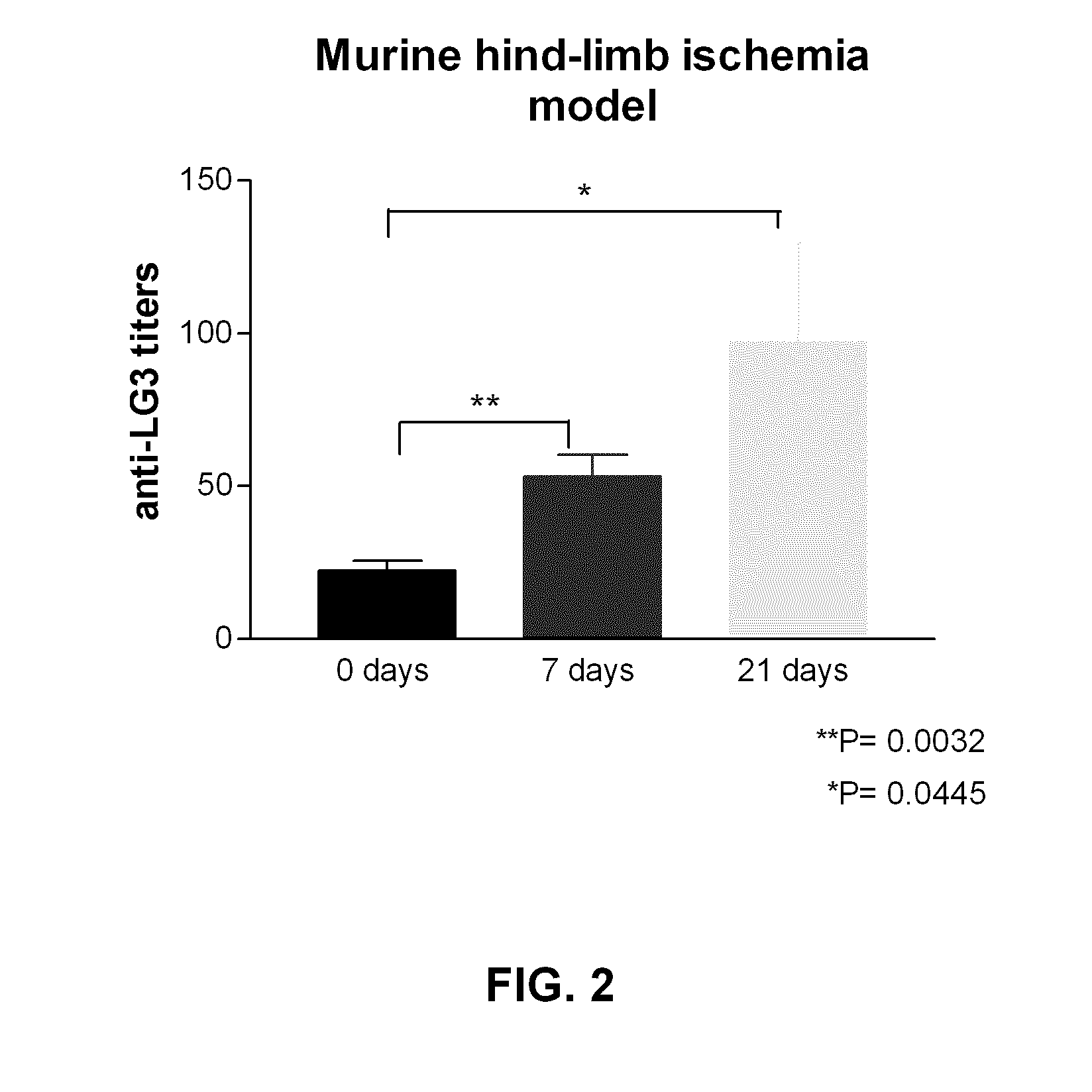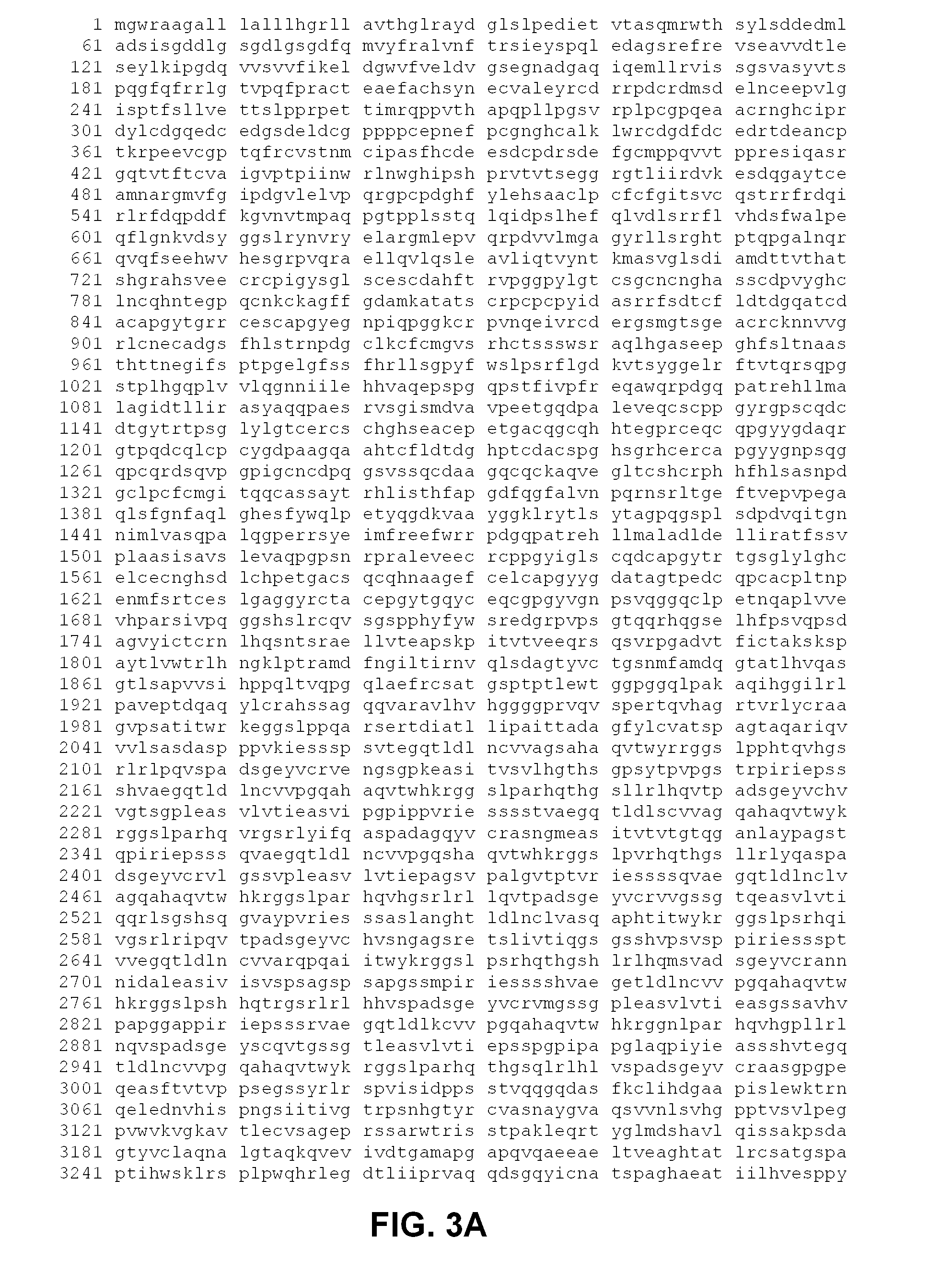Anti-lg3 antibodies and uses thereof
a technology of anti-lg3 antibodies and antibodies, which is applied in the field of vascular damage and transplant rejection, can solve the problems of irreversible acute graft failure, damage to the endothelial lining, and activation of t cells in the hos
- Summary
- Abstract
- Description
- Claims
- Application Information
AI Technical Summary
Benefits of technology
Problems solved by technology
Method used
Image
Examples
example 1
Materials and Methods
[0070]Design. A retrospective case-control study was performed in which 2 groups of patients were selected according to the post-transplant occurrence of the following conditions: acute vascular rejection (AVR) or normal function of the renal allograft. Circulating levels of anti-LG3 antibodies were measured before transplantation and as close as possible to the time of rejection in the AVR group.
[0071]Patients. Clinical information on the post-transplant evolution of all kidney transplant recipients at the Centre Hospitalier de l'Université de Montréal is prospectively entered in a computerized database. All subjects who received a kidney transplant between Jan. 1, 1990 and Jan. 7, 2009 were screened for inclusion in this study with the use of this electronic database. All biopsies were performed for cause. All patients with AVR, defined as Banff 1997 class II or III cell-mediated rejection or antibody-mediated rejection, were included in this study. Normal con...
example 2
Anti-LG3 Levels Pre- and Post-Transplantation
[0074]Anti-LG3 serum levels were measured before transplantation in 23 renal transplant patients with AVR and 45 renal transplant patients with normal renal allograft function. Post-transplantation sera were available in 20 subjects with AVR and 39 subjects with a normal graft. In the AVR group, 19 patients were de novo renal transplant patients and 4 subjects had received an organ transplant in the past. In patients with normal allograft function, 44 patients were de novo renal transplant patients and 1 patient had received a renal allograft in the past. One AVR case occurred 6 months after transplantation, and anti-LG3 levels were measured on the day of the biopsy in this patient. For all other subjects, post-transplant anti-LG3 levels were assessed within 2 months after transplantation. In both groups the median time elapsed between transplantation and blood sampling was 2 weeks. At the time of post-transplant blood sampling, 50% of AV...
example 3
Increased Levels of Anti-LG3 Antibodies Following Femoral Artery Ligation in Mice
[0078]Hind-limb ischemia was induced through femoral artery ligation. Serum was collected at baseline, 7 and 21 days following femoral artery ligation. Anti-LG3 IgG titers were significantly higher one week following femoral artery ligation compared to baseline (FIG. 2). Anti-LG3 titers further increased at 21 days post-induction of hind-limb ischemia (FIG. 2). This data demonstrates that anti-LG3 levels are increased in other types of vascular damage, such as vascular damage associated with ischemia.
PUM
| Property | Measurement | Unit |
|---|---|---|
| time | aaaaa | aaaaa |
| concentration | aaaaa | aaaaa |
| median time | aaaaa | aaaaa |
Abstract
Description
Claims
Application Information
 Login to View More
Login to View More - R&D
- Intellectual Property
- Life Sciences
- Materials
- Tech Scout
- Unparalleled Data Quality
- Higher Quality Content
- 60% Fewer Hallucinations
Browse by: Latest US Patents, China's latest patents, Technical Efficacy Thesaurus, Application Domain, Technology Topic, Popular Technical Reports.
© 2025 PatSnap. All rights reserved.Legal|Privacy policy|Modern Slavery Act Transparency Statement|Sitemap|About US| Contact US: help@patsnap.com



